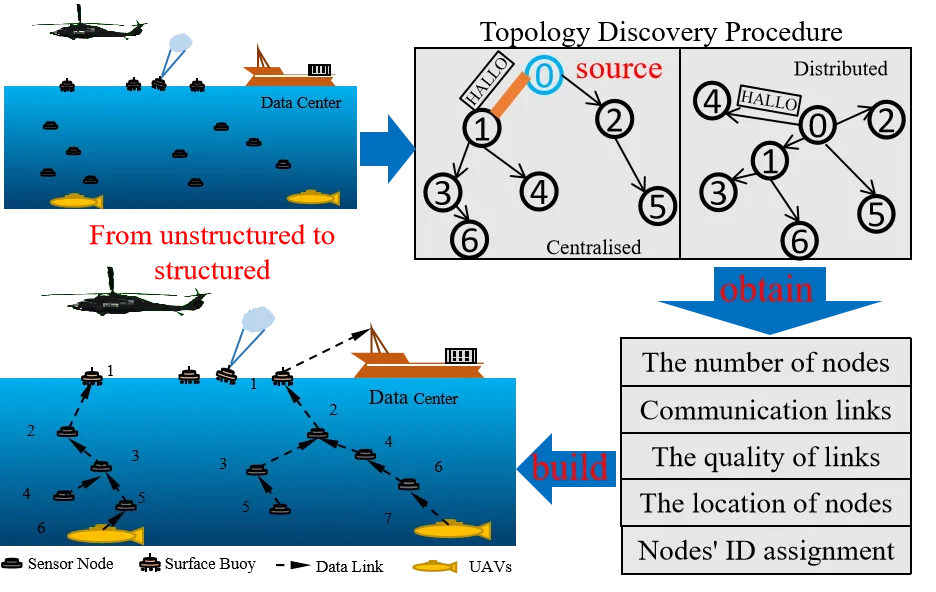Fundamentals and Advancements of Topology Discovery in Underwater Acoustic Sensor Networks: A Review
The oceans and seas are often explored in quest of knowledge to know the wealth and mysteries hidden in 70% of the earth’s surface. However, over the past few decades, oceans and deep sea have been extensively explored for marine environmental monitoring, energy resource harvest and development, and other marine science and technology projects.
Underwater sensors and vehicles can collaboratively collect data and monitor the environment. They rely on Underwater Acoustic Network (UAN) technology to exchange data and control information. Extensive research has focused on advancing communication, topology control, media access control, and routing technologies for UAN, assuming the location and topology information are known a priori.
Topology discovery for UAN is much more challenging than the terrestrial sensor network. The severe propagation loss and ocean noise lead to link interruptions and unreliable transmissions. Underwater acoustic media differ drastically from the radio, with limited bandwidth, several-order slower propagation speed, high dynamic, three-dimensional mobility, and complicated multi-path.
The network topology discovery is the first challenge in implementing and managing any UAN network.
The first challenge of any UAN operation is its topology discovery. A network topology discovery design finds the neighboring nodes and establishes a communication protocol. When a node sends a discovery packet, neighboring nodes receive it, collect/add topology information and then rebroadcast the packet. A node gets full knowledge of the entire network only after multiple cycles, concluding the topology discovery process.
The study presented here conducts a comprehensive literature scan on the existing approaches for UAN topology discovery.
Different topologies and protocols are formed based on how nodes propagate neighbor information. The topology algorithms influence the performance of each layer of the UAN protocol stack. An effective and efficient topology discovery process enhances the performance of communication and networking protocols immensely.
The study has categorized protocols as distributed or centralized for analysis. As the name suggests, the centralized topology discovery protocol has a pre-defined central or leader node. The central node has superior specifications and controls the start and scheduling of the entire topology discovery process. The centralized topology is simpler and easier to upgrade. But it suffers from time delays because all communications have to go via the central node.
In contrast, a distributed topology discovery protocol has all nodes in the network with similar specifications and control rights. The algorithm employs a random access mechanism and autonomous node assignment. The distributed topology is faster and easier to expand. However, there are chances of duplicate node Ids with expansion.
Most existing topologies are homogeneous and have fixed structures. An optimal, efficient topology design should have low convergence delay, low energy consumption, and high accuracy and integrity. Data exchange between collaborating devices and correctly configuring subsea nodes before deployment become increasingly challenging as networks grow in size and complexity.
Further research is required to develop dynamic ID-assigned, scalable, link-quality aware, autonomous, distributed, energy-efficient, and fast topology discovery processes for large-scale UANs.




